- NYSD: The tortoise and the hare at Skelton Castle - August 28, 2025
- Green Moor lift Billy Oates Memorial Cup at Hill Top Lane - August 13, 2025
- One weekend, short games: Kirkheaton & Upper Haugh excel - July 29, 2025
Shortly before the start of the season, I had a look through MCC’s 2024 fixture list.
Each year, ‘Egg and Bacon’ representative teams visit clubs, of all sizes, across Britain, to take part in celebration matches, often held in midweek.
Sure enough, on Thursday, August 22, MCC were scheduled to play at Wath Cricket Club, as part of the Yorkshire Cricket Southern Premier League club’s 125th anniversary year commemorations.
Victory over MCC
When the big day dawned, it was accompanied by a decidedly unpromising weather forecast, deterring me (and, it seems, a few others) from attending. I missed Wath win, by two wickets, to claim a notable scalp.
I am not one to give up easily, however, and August Bank Holiday Monday presented an ideal opportunity to visit Wath, who were hosting Barnsley Woolley Miners Seconds in what amounted to a winner-take-all YCSPL Championship Division relegation battle.
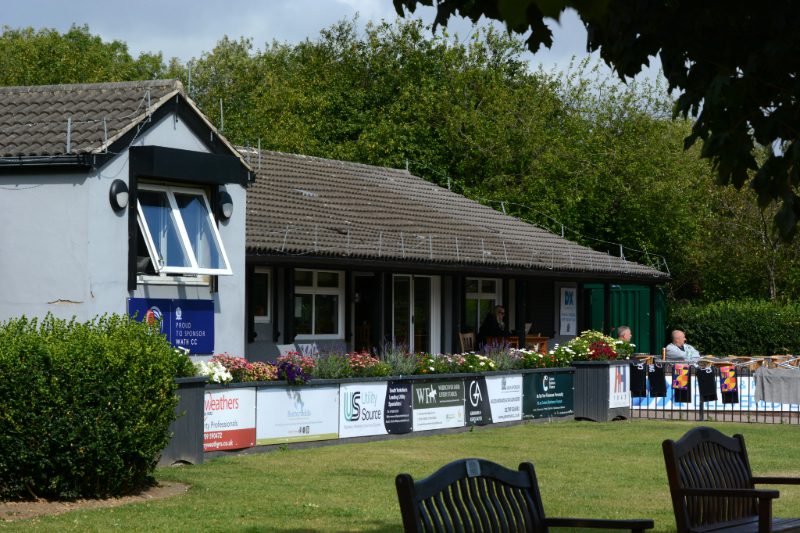
The fixture, between 10th and 11th respectively, concluded Wath’s August Cricket Week, a festival featuring not only the MCC match but also, on August 21, a contest between Wath Past and Wath Present XIs. The Present XI won, by one wicket.
With the weather forecast to cooperate (not much sun but dry, at least), we – my wife and I – headed to Wath Park, a spacious, public park ground Wath Cricket Club share with the town’s rugby union club.
Anniversary brochure
Inside the immaculate pavilion (clearing up had almost finished from the previous day’s Beach Party), I picked up a copy of a 40-page brochure Wath produced to mark their 125th. Available, at £3, along with anniversary-themed mugs etc, from the bar.
The brochure, illustrated lavishly, offers a splendid overview of the Wath club’s history, achievements, people and personalities.
In his ‘Welcome’ to a “trip down Memory Lane”, club chairman Peter Barlow acknowledges a debt of gratitude the Wath club owe to a local brewer, Spedding Whitworth, formerly of the defunct Whitworth, Son & Nephew brewery.

When Wath Cricket Club were established, in 1899, Whitworth, born at Liversedge in 1833, but a Wath resident since around 1860, “gave the ground and £1,000 towards the cost of building the original pavilion”.
According to the Brewery History Society, the Whitworths brewery was located on Moor Road, which today continues to provide access to the Wath Park cricket ground.
A supermarket occupies much of the site of the former brewery, which closed circa 1958, when Whitworths accepted a takeover bid from Tadcaster-based John Smith’s. Whitworth Way, alongside the supermarket, recalls the brewery’s existence.
Glory years
Peter describes the 1920s and the 1930s as Wath Cricket Club’s “glory years” and the late 1950s and the 1960s as the “desperate years”. During the latter period, the ground was badly affected by subsidence and flooding.
Flooding returned, with a vengeance, in 2001, 2007 and 2019. The inundations merely highlighted, as Peter writes, the Wath club’s “remarkable ability” to bounce back from cruel reversals in fortune.
In 2024, Wath run three senior teams, along with junior XIs in the under-nine, under-11, under-13, under-15 and under-17 age-groups. Peter describes the club’s social membership as “alive and prospering”.
Club chairman since 2005, and a First or Second XI player between 1968 and 2023, Peter writes:
“In the last 50 years or so I have seen many features and qualities that have stood out for me – individual and group loyalty, team spirit, longstanding friendships that have stood the test of time. A commitment to maintain certain standards and improve whenever possible.”
The Wath ground, opened formally by Spedding Whitworth, staged its first game, a two-dayer, on April 28-29, 1899. A Yorkshire County XI beat, by an innings and 12 runs, a Wath & District XVI. That’s right: Wath fielded 16 players to Yorkshire’s 11!
The brochure charts Wath Cricket Club’s eventful history, and salutes Major Booth, one of the club’s earliest celebrated and most talented players. Having represented Yorkshire and England, on the cricket field, Booth died, in 1916, during the Battle of the Somme.
Post-war League cricket
In 1918, Wath opted to abandon the ‘friendly’ games of the war period, in favour of league cricket. The club ran teams in the Doncaster and Mexborough leagues before, in 1921, joining the Yorkshire Council, which soon had a South Yorkshire Section.
Wath fielded “exceptional” teams in the Twenties, the brochure relates. Between 1921 and 1931, Wath were South Yorkshire League champions five times and topped the competition’s South Yorkshire Section on three occasions. Tommy Hargreaves secured ‘club legend’ status during the Twenties and Thirties.
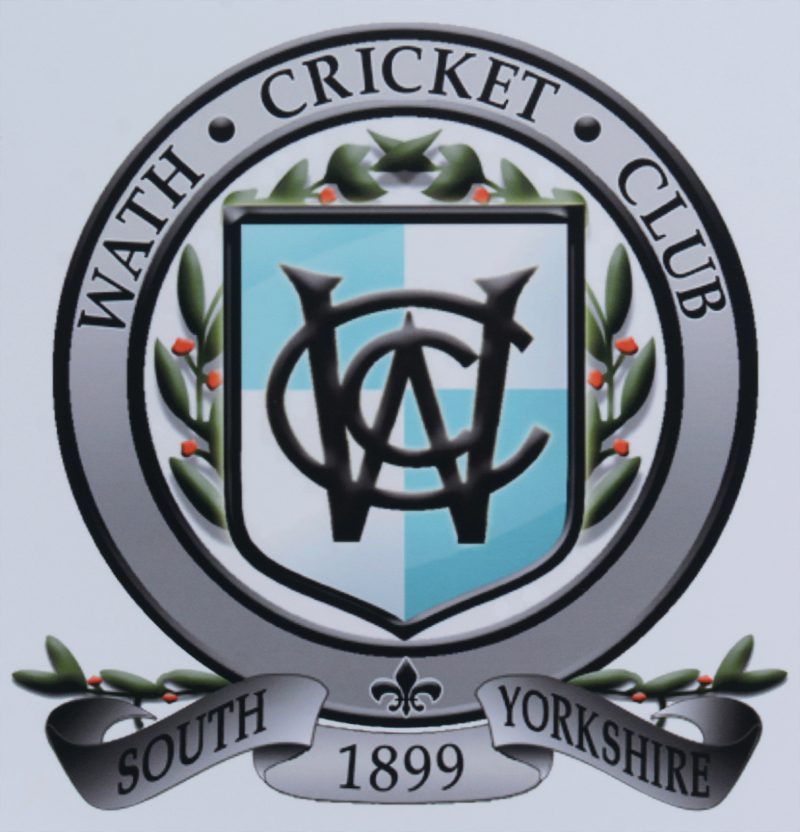
The club’s “second-to-none” ground and facilities were so impressive, Yorkshire County Cricket Club, into the 1950s, played Second XI matches at Wath. The organisational skills of then-club secretary Harry Breislin did much to bring such fixtures to the ground.
Wath’s First XI linked up with the South Riding League, the first season of which was 1948, but by the Sixties, a decade of “transition and renewal”, had to spend two seasons playing elsewhere, owing to subsidence-inspired waterlogging at their ground.
During that long and frustrating enforced absence, Wath’s pitch was re-levelled and improved drainage installed.
A 1981 fire destroyed the original pavilion. Its replacement, a single-storey structure, set back from the ground’s west side boundary, is still in use.
Junior cricket – an under-18 side – was launched by Wath during the Eighties, and in Steve Hyde and Mark Wilson unearthed two consistent talents.
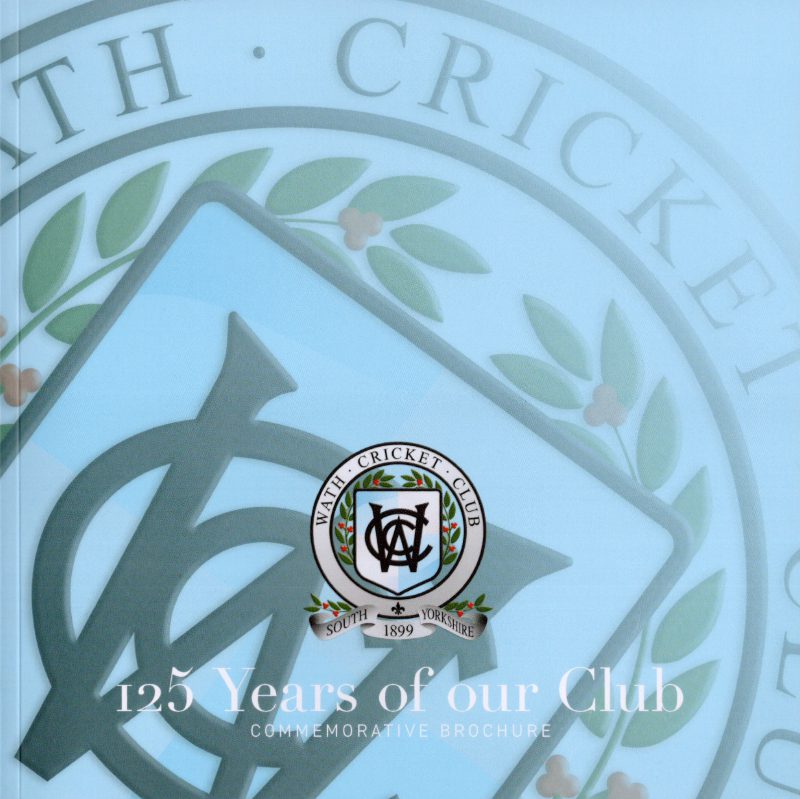
Come the Noughties, Wath had become members of the South Yorkshire Premier League, where they remain. In 2006, Wath finished second, the club’s highest finish.
Three years later, Wath won the inaugural Yorkshire League T20 competition, defeating Sheffield United and Whitley Hall at Finals Day.
Recent milestones include the first women – Kate Cooper and Tilly Thomas – to play Saturday league cricket for Wath.
I found spacious Wath Park – a.k.a. the DX Cricket Ground – an interesting arena. On all but the west side, mature trees fringe the site. The trees are set back from the pitch, ensuring the ground pulls off the trick of feeling simultaneously open and enclosed.
Loved the floral displays in front of the pavilion. Together with the smartly presented bar, they tell of a cricket club at which pride and attention to detail are important.
Since the Sixties, the Wath Park ground has been owned by a local authority (what became, I assume, Rotherham Metropolitan Borough Council), which the club praise for being “supportive”.
At the north end, the cricket pitch, flat, rectangular and a decent size, overlaps with a pitch used by the rugby union club.
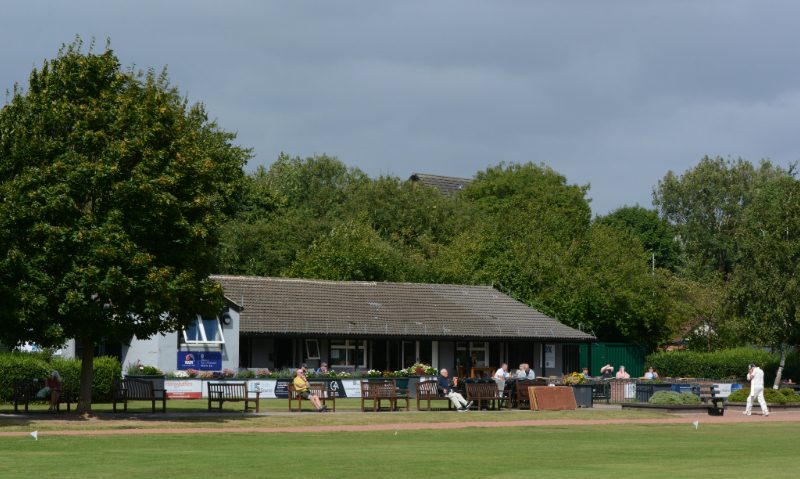
It would, of course, be a great shame if Wath’s 125th anniversary year included the First XI’s demotion to the YCSPL’s third tier. Thrashing Bank Holiday visitors Barnsley Woolley Miners Seconds, by 116 runs, went a long way to averting the threat.
South African professional Hayden Byrne, batting at No 3, scored 97 (off 123, including a six and 12 fours) as Wath recovered, from 27-2, to register 210-8 from their 50 overs. Byrne added 77, for the third wicket, with No 4 James Barnard (36 off 48).
Byrne, a quick, then opened the bowling, and took 2-18 from five. The import was outshone, however, by left-arm spinner Michael Bates, who picked up 4-23 from 12, in reducing Barnsley Woolley Miners Seconds to 94 all out in the 31st over.
With three games left, the match points leave Wath 17 points above the relegation zone. On September 7, doomed Houghton Main, well adrift at the bottom of the Championship Division table, visit Wath for what looks like a home banker. Job done, surely?
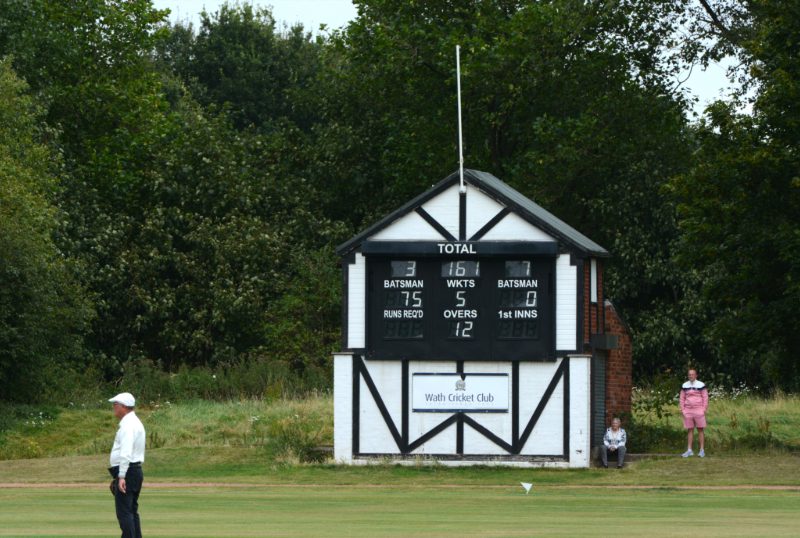
During the tea interval, I explored beyond the trees at the ground’s north end, and soon found myself on the shores of Manvers Lake, a superb recreational watersports facility.
Since the demise of the coal industry, Wath has changed dramatically. I first visited the town during the late Seventies, and remember a vast railway marshalling yard (with integral locomotive depot and overhead electrification), a colliery (Manvers Main) and a pollution-spewing coking plant (Manvers). Now, all gone.
Wath’s next chapter
Cleaner and greener, Wath is expanding (the Census indicates an increase, between 2011 and 2021, of almost a third in the town’s population). From the so-called ‘Blue Bridge’, providing access to the lake, across Manvers Way (the A633, the Rotherham to Barnsley road), new houses and industrial estates are springing up everywhere.
That must be good news, as Wath Cricket Club look forward to the next 125 years.

Enjoyed the read?
You can check out other club visits by Andrew in his column, Miles Per Gallon.
Here are all of our club cricket articles, with the latest first.
What an excellent report on regional cricket, I am a non-playing member of Wath Cricket Club and enjoy the atmosphere as well as the clubs commitment to the sport and the town.
A lovely read 👌💙